
From December 1, 2021 at the Air Base in Siauliai (Lithuania), the Polish Military Contingent Orlik performs its four-month combat duty over the Baltic countries. This is the tenth Polish change as part of the NATO Baltic Air Policing mission. The contingent numbers about 150 people. Its core consists of soldiers from the 31st Tactical Air Base and four F-16. For the F-16 crews from Krzesiny, this is already the third NATO Baltic Air Policing mission. The most important task of the soldiers of the 10th rotation of the Polish Military Contingent Orlik is to intercept aircraft that will violate the airspace of Lithuania, Latvia and Estonia. The mission of NATO, as part of the military airspace surveillance of the Baltic states, is carried out on the basis of a rotating system of duty hours performed by other allied states since 2004. Polish soldiers flew for the first time at Baltic Air Policing in 2006. This time, the actions of the Poles are supported by Belgians from the 349 Squadron from Kleine Brogel stationed at the air base in Amari (Estonia), also with F-16.
You see photos from air-to-air photo shoot and you think to yourself, what the fun it was! Someone ordered a session somewhere, the lucky photographers sat down on the ramp, took pictures and everything was clear, easy and pleasant. Hmmm, not really. Of course, the photography itself is great, but… Exactly. Before it comes to photography, there is a lot of work to be done. Photography here is like the top of the iceberg. The culmination of everything that needs to happen beforehand. What needs to be planned, planned and done. The success of an air-to-air session consists of successes in all its individual components. And there are a lot of them! The first element is the "models" - aircraft participating in the session. The more attractive and (which is very important) the more experienced, willing and flexible pilots, the better. Then, create a session scenario that will make the most of both the models' capabilities as well as the forecasted weather and the background (ground, clouds). Also for the sake of weather, light and background, the session should be started at the best possible time. Another important element is the precise transfer of individual elements of the session to the pilots by the leading photographer. A session will not turn out well if its individual elements are not precisely performed by pilots. Only the last element influencing the success of the session is the appropriate technique of photography, the subsequent selection and processing of photo-video material.
More than once or twice, it has happened in the past that someone, somewhere, once performed an air-to-air session, but due to the lack of skills, experience or just the prevailing conditions, one of the above-mentioned elements has been collapsed and from this unfortunately, great material was not created. Unfortunately, almost always before the session there are a lot of unknowns that need to be replaced with specific data. Most of the data can be obtained from people organizing the session from the aviation side, others result directly from the experience of the person conducting the session from the photographic side. Some of the unknowns are revealed only during the session itself.
How was it this time? It all started with consent to a session of individual commands. I will not list and go into details, because I will twist something else, and this is not my plot, but the fact that such consent took place in such difficult times is a great respect for everyone who sees the role of the media in military operations, for example Baltic Air Policing. For me, the most important thing was the phone that I am on the session list and I have to prepare it from the photographic side. Great joy, great pride, but also great responsibility. Responsibility to the NATO command, to the Polish commands, to (as it turned out later) also not only Belgian commands, to other photographers - not only from Poland. I was proud that this was what I was trusted in this regard. Later, as soon as I found out that my friends from Poland would also be on the ramp, I decided to do it together. Two or three heads are better than one :)
It's hard to prepare a session where you don't know what's going to happen. I knew for sure that the Lithuanian C-27J Spartan would be a photoship. I knew that they would definitely introduce the Polish F-16s. I suspected that the Belgian aircraft stationed in Amari (Estonia) would also be included in the session. There were also voices about other session participants. Americans stationed in Łask? Danes who were to fly to Siauliai at that time? How many aircraft will there be? Two? Four? Six? Eight? How many flights do we anticipate? At what time? What session time? Come on, how to write a scenario? :) I started collecting information divided into those that should not change and those that may appear, but not necessarily. I wrote down everything as it seems to little boy. I sailed with fantasy, assuming the maximum variant. It is always easier to reduce a scenario than to create and add more, unforeseen bricks, according to the principle that it is easier to cut a stick than to thicken it later. The anticipated breakthrough turned out to be the conversation with the pilot - the leader of the Polish pair. Unfortunately, I cannot provide any personal data, but our leader, apart from his great knowledge, skills and aviation experience, also had experience in air-to-air sessions. Most importantly, he was concrete and very open to action. We quickly ruled out many pieces of my puzzle and discussed what was left on the table. After these talks, the basic version of the scenario was created. Each subsequent conversation changed something. It turned out that the Belgians, however, cannot take part in the session at the same time as the Poles. Therefore, a plan of two separate sessions was created - one Polish and the other Belgian. Then it happened that we were only doing a session with Poles. The Belgians, however, did not give up and pressed, but to take part in the session and additionally together with the Poles. Signal was on fire. Conversations, changes, combinations. One thing was certain - everyone wanted to make a session, but it had to be somehow adapted to the operational activities of both contingents.
On Monday, January 24, we were already there. We spent the whole day talking to Polish, Belgian and Lithuanian pilots, and what went with it, changing the scenario and turning everything upside down every now and then. Only positive news started pouring in. The Belgians got, and what they got there, they fought for the green light for the session. And we got the green light for two flights! What's more - we were able to freely set departure times, so it happened that on Tuesday we will make a flight in the afternoon and on Wednesday morning. The weather for Tuesday and Wednesday was going to be quite interesting. There was no madness, but also no drama. Everything could change one way or the other at any moment. Only in the evening, after the final version of the scenario seemed to be worked out, and after sending it to the pilots for review before the morning briefing, we had some time, which we finally devoted to photography. More specifically for the "study session". The studio was a beautifully hangar, and the models standing in the middle of it, the F-16 plane, ready to take off at any moment, and an equally ready pilot. We played a little with the light, a little with the frames. The atmosphere of the session was exceptional. The awareness of the danger lurking somewhere nearby, and therefore the command to take off, which can drop at any moment, and the contact with "live" weapons, is not something that is experienced during each session.
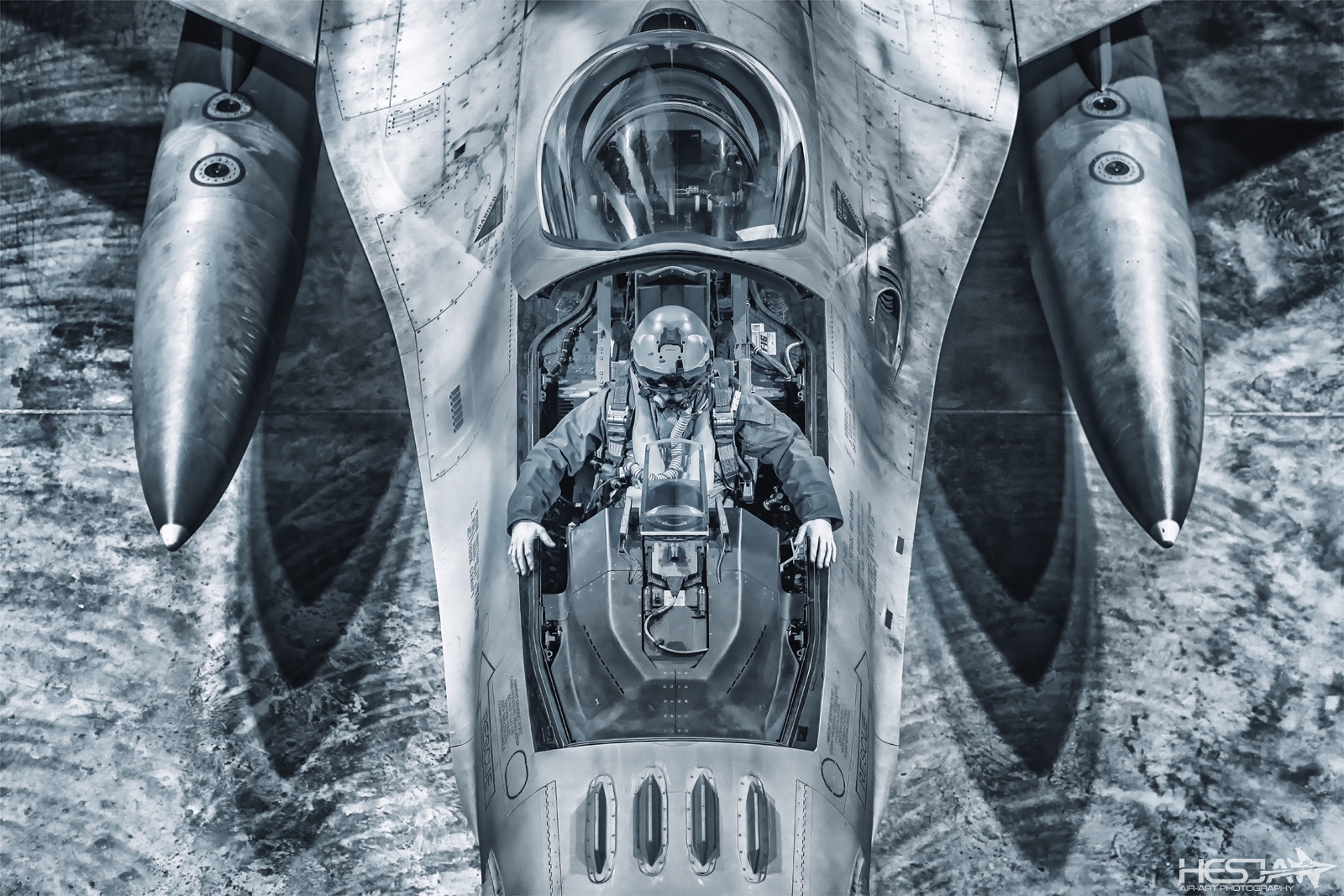
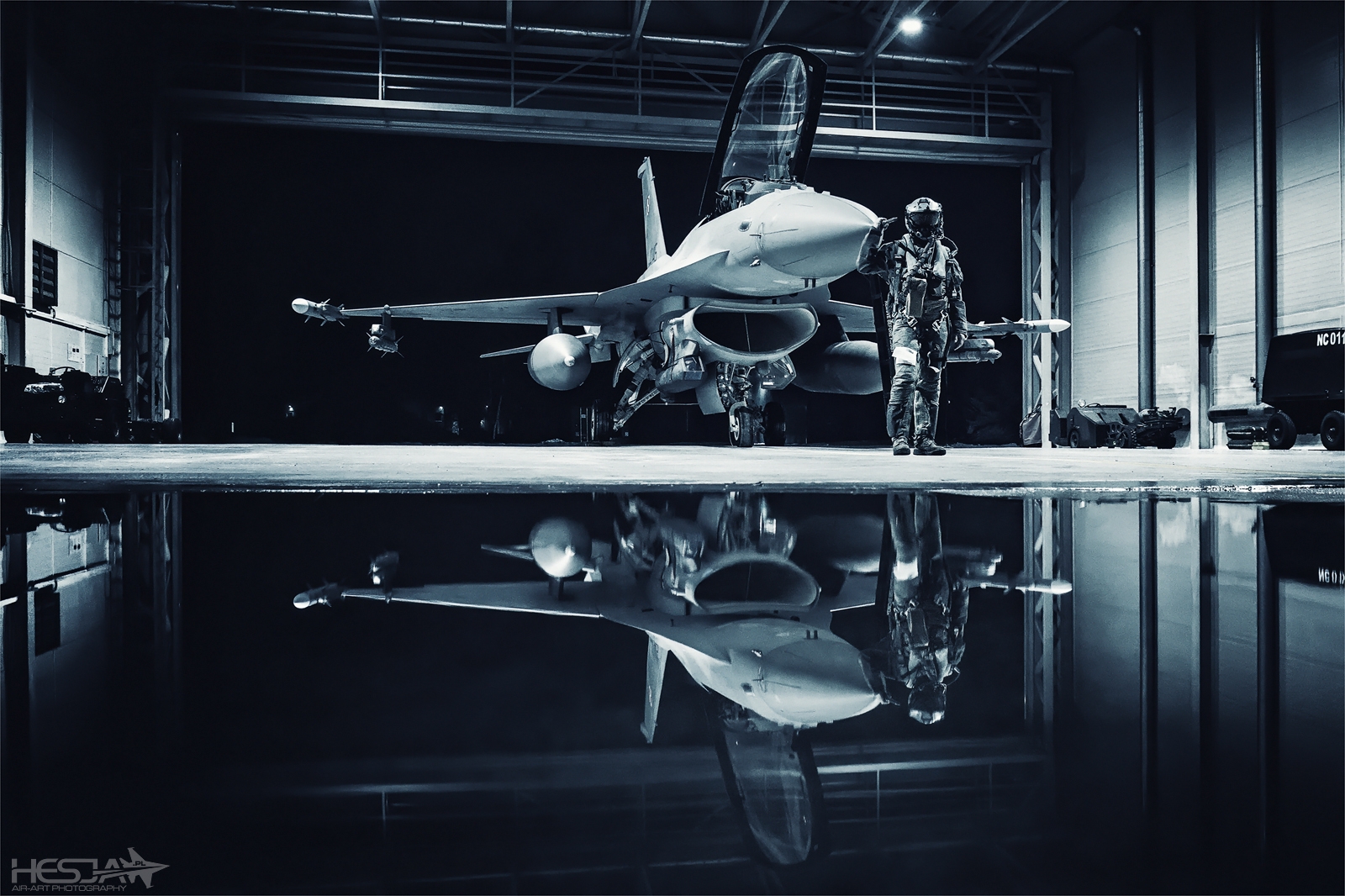
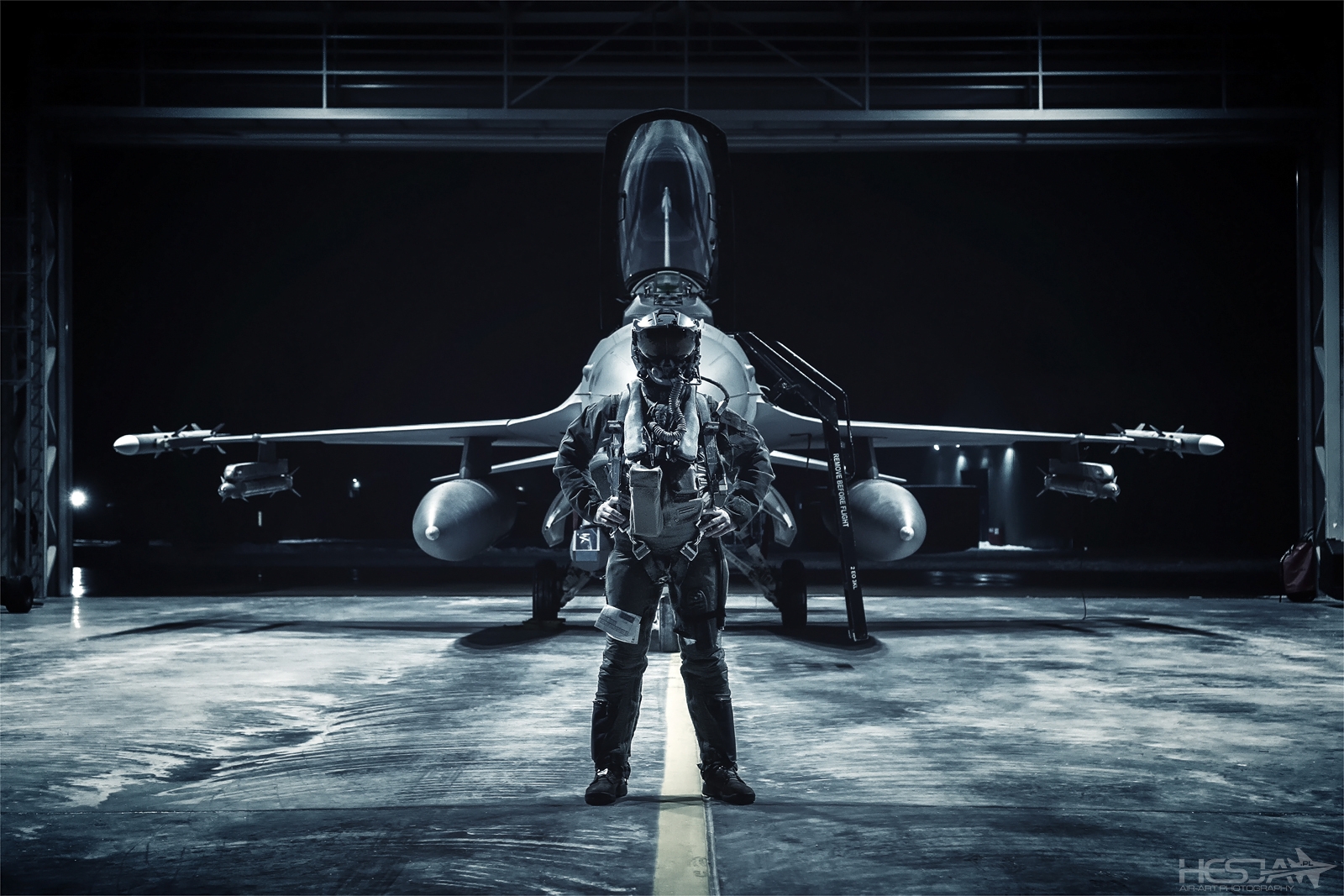
On Tuesday, January 25, we started with a briefing. A video connection was also established with the Belgians in Amari. It's fun to finally see the faces of the people with whom you constantly write and settle all the details. In general, conducting such a briefing in such conditions, in English, is a great experience. Only at this point you really feel you are taking part in something very important and big. After the briefing, we had a lot of time to prepare the equipment and… oh yes, for further changes to the scenario! Not only have we moved the start to the right, but also changed the order by 180 degrees. Objective? After analyzing the weather forecast, it turned out that there is a chance to capture the F-16 pair with afterburners on. The best is a Polish pair that will be able to fly at the end of the session as long as they have enough fuel. Our proposal was accepted and it must be emphasized here - thanks to the exceptional flexibility of all pilots, resulting from their great willingness to do everything as well as possible.
We took off at 3 p.m. and immediately climb very high, which equaled - very cold. Keeping in mind the events of 2019, when my hands were totally stiff to the elbows, I decided to take a risk and put on the powerful Mechanix Winter Impact gloves, which I bought after 2019 adventure. I checked at home whether I would be able to operate the camera in them. At home it was ok, but the situation that happened to me in the air changed a lot. I had two cameras with me. One of them was the borrowed Nikon's latest flagship camera - the Z9 mirrorless camera, the other was my favorite Nikon D850. Unfortunately, as soon as I saw F-16s behind the ramp, I realized that the automatic focusing was not working in the D850! This is the basic and probably the most important function of photo equipment not only in aviation photography. I tried to find out the causes of this ailment on an ongoing basis and unfortunately in these hardcore conditions I could not deal with the problem. I painfully switched to manual focus with the lens ring located right next to the camera body, which was not easy with my goalkeeper gloves. Moreover, just as gloves allowed you to operate the shutter button and turn the control wheels, any action on the Z9's joystick to set the focus point was a total lottery. My situation looked almost hopeless. Two great cameras - one almost out of order, controlling the other - a lottery. Nobody, however, will not interrupt the session to let hesja take over the equipment, so I fought as much as I could. I missed a lot of frames, but I managed to save a few on the cards. It was cold but beautiful! How I love those moments when these powerful, most wonderful models pose just behind the ramp, right behind our legs. We implemented our scenario step by step. First, we were posed by a Belgian pair.
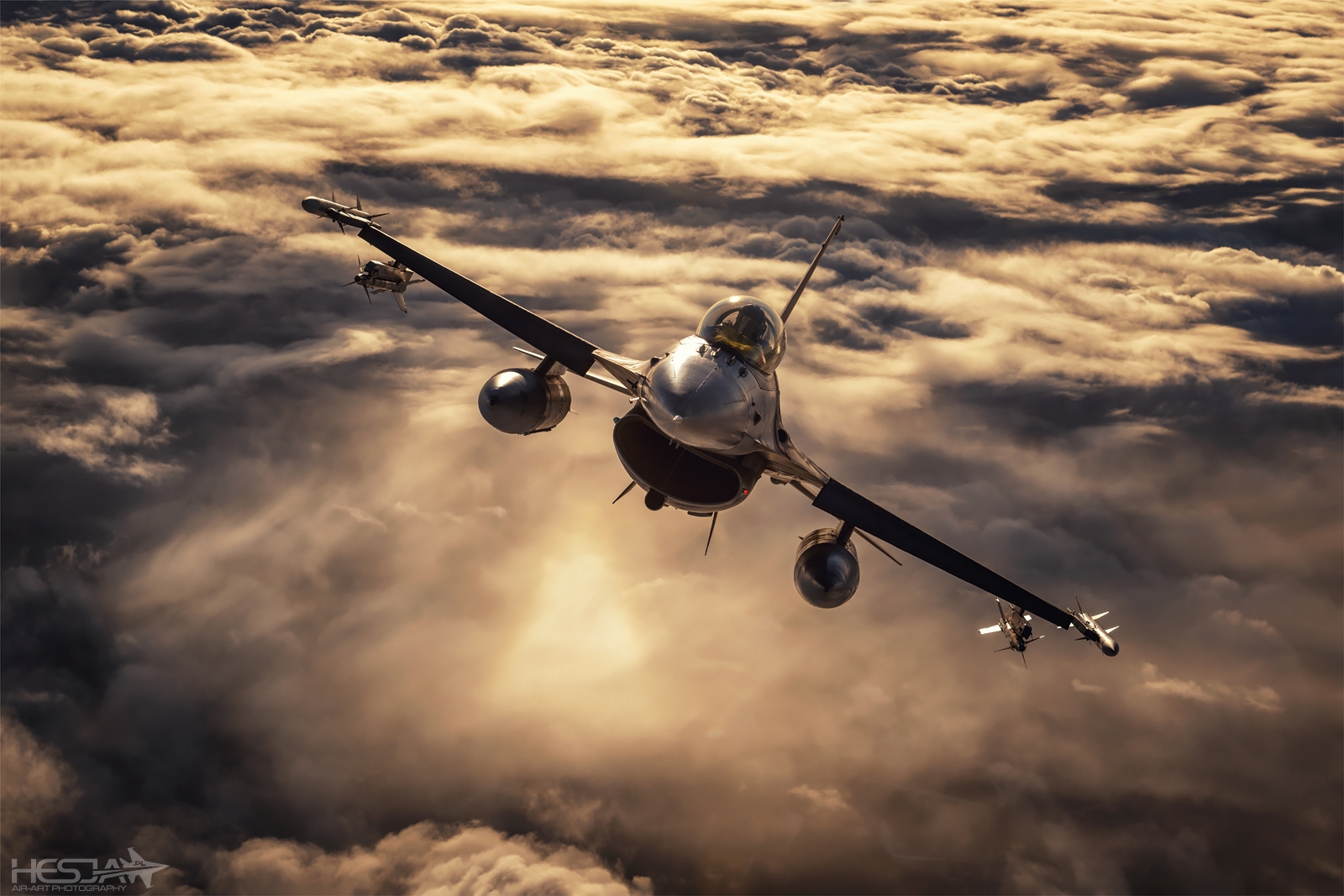
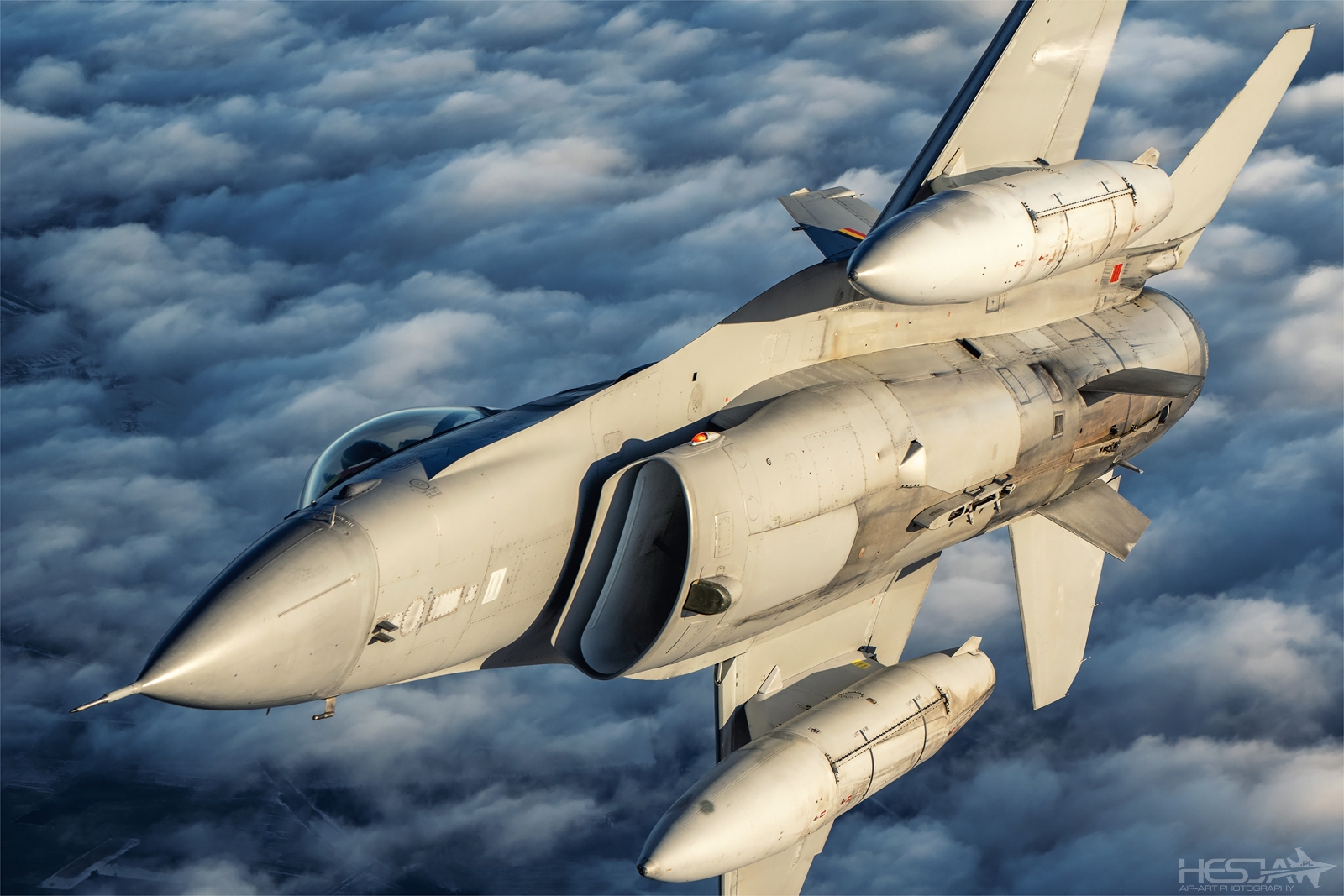
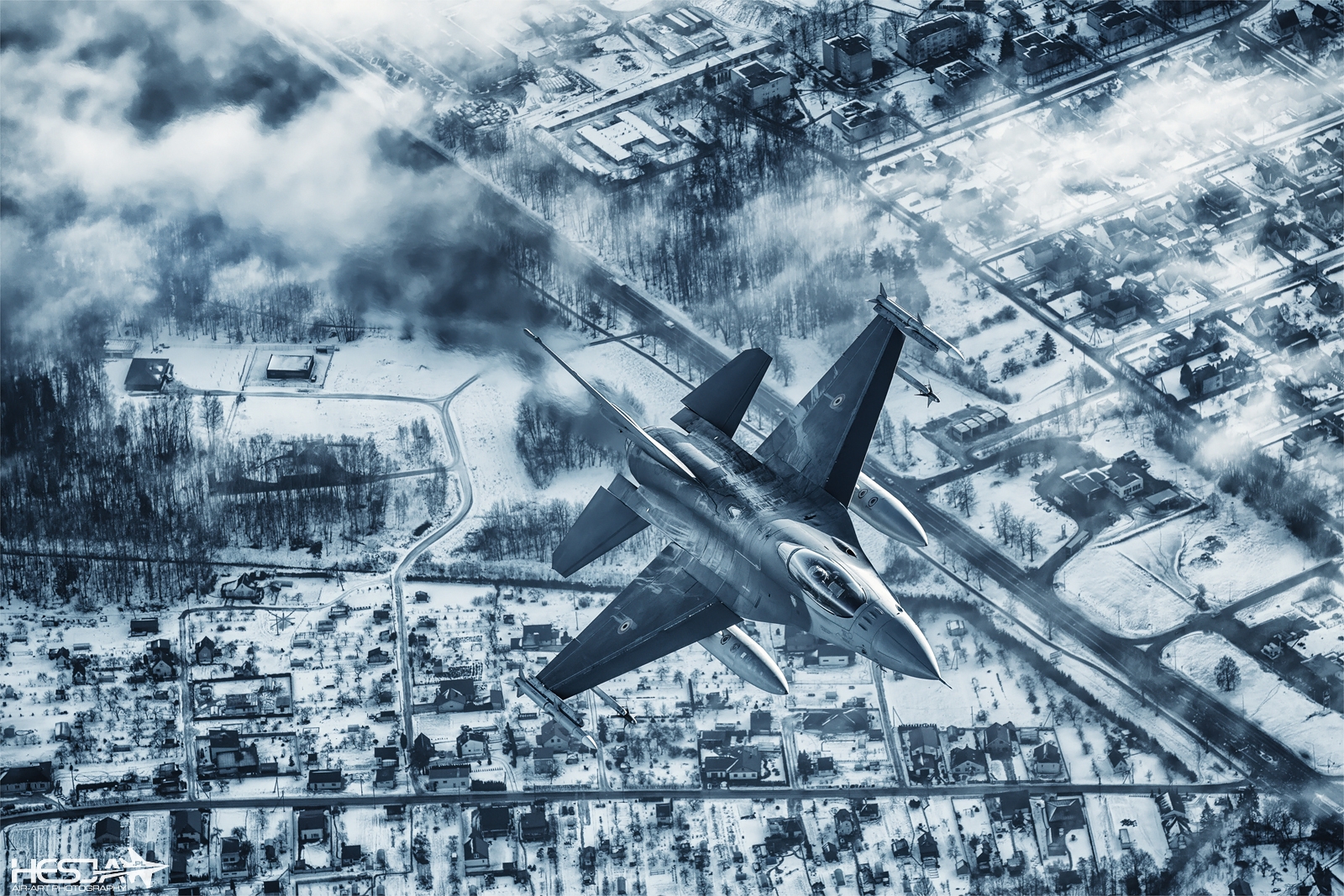
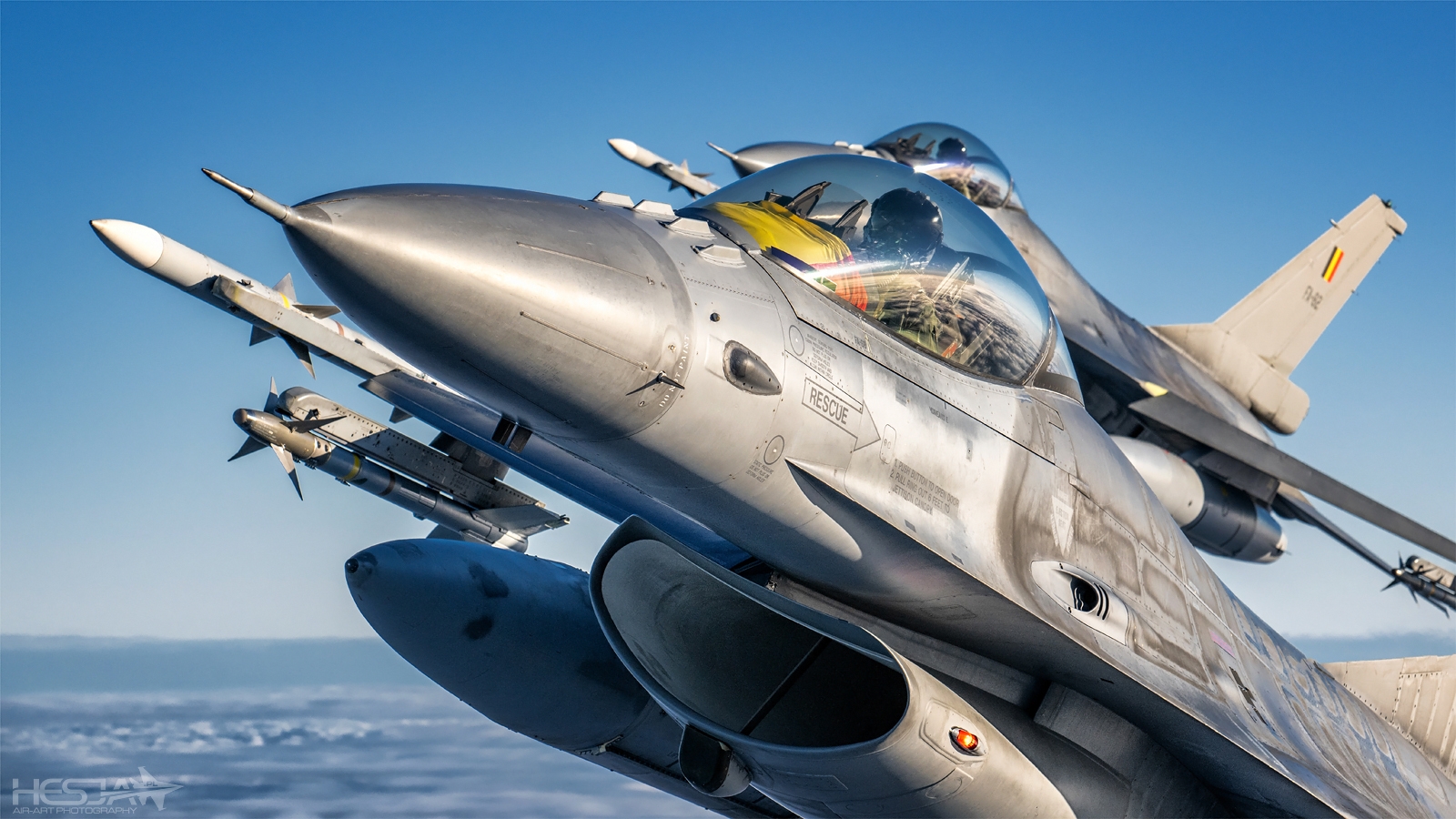
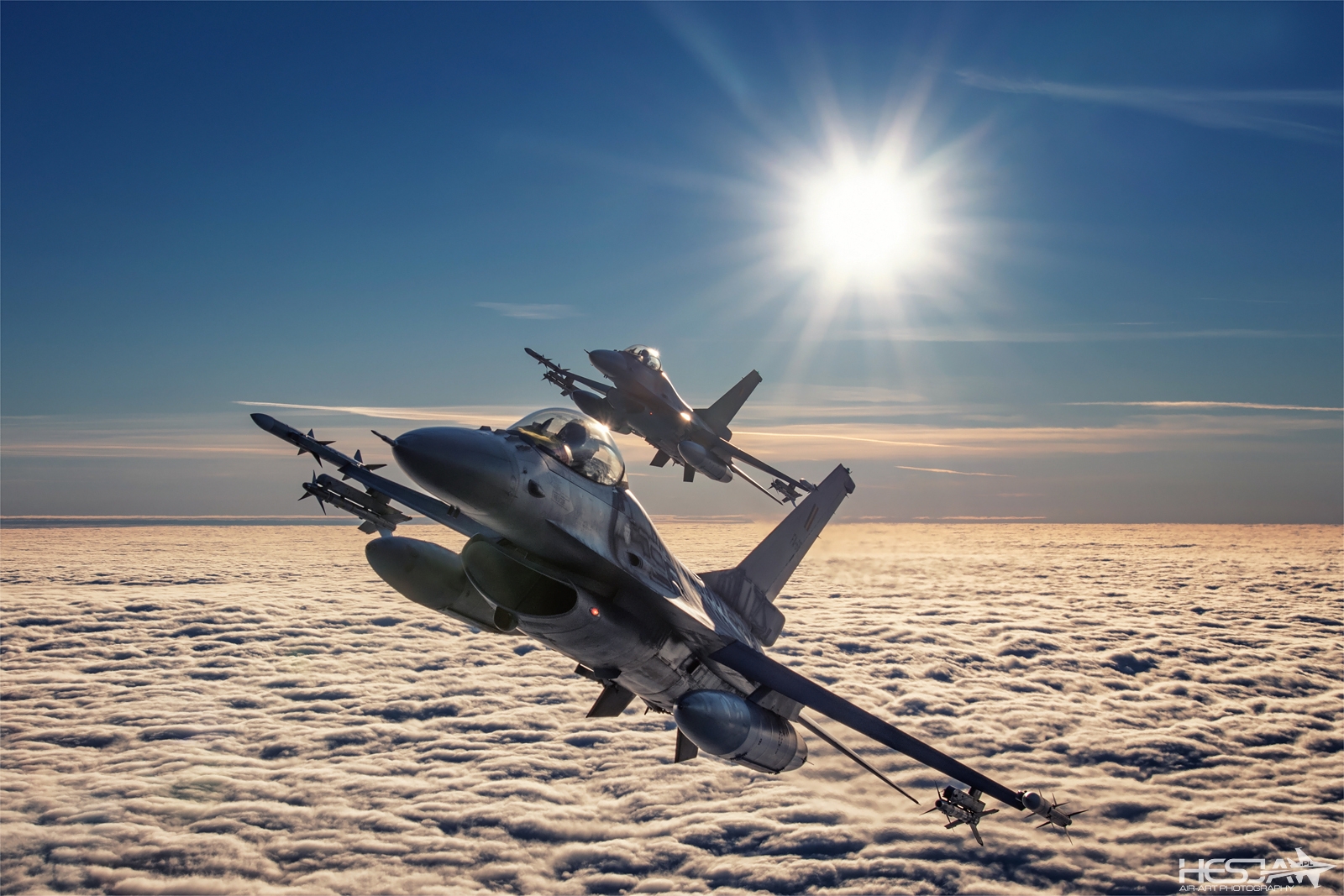
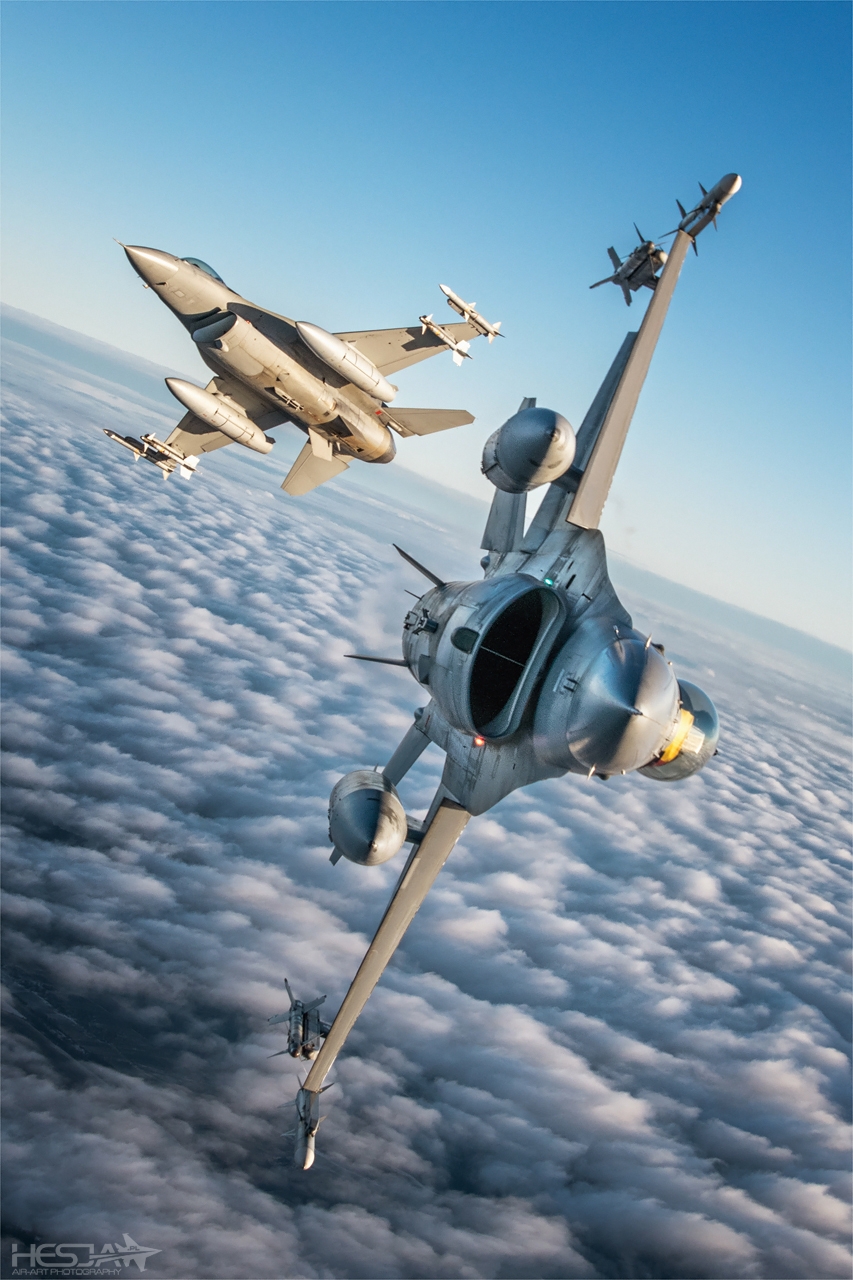
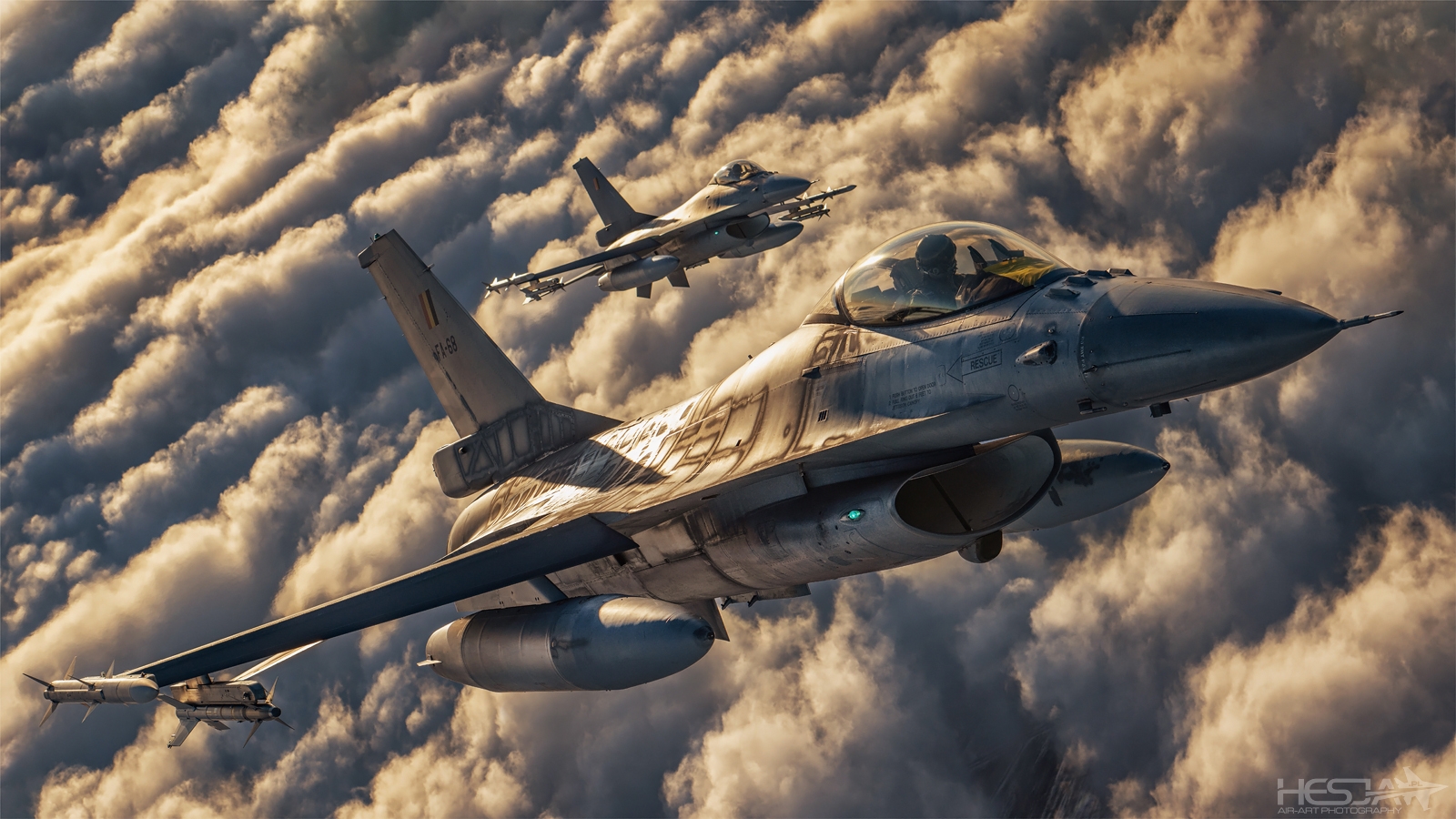
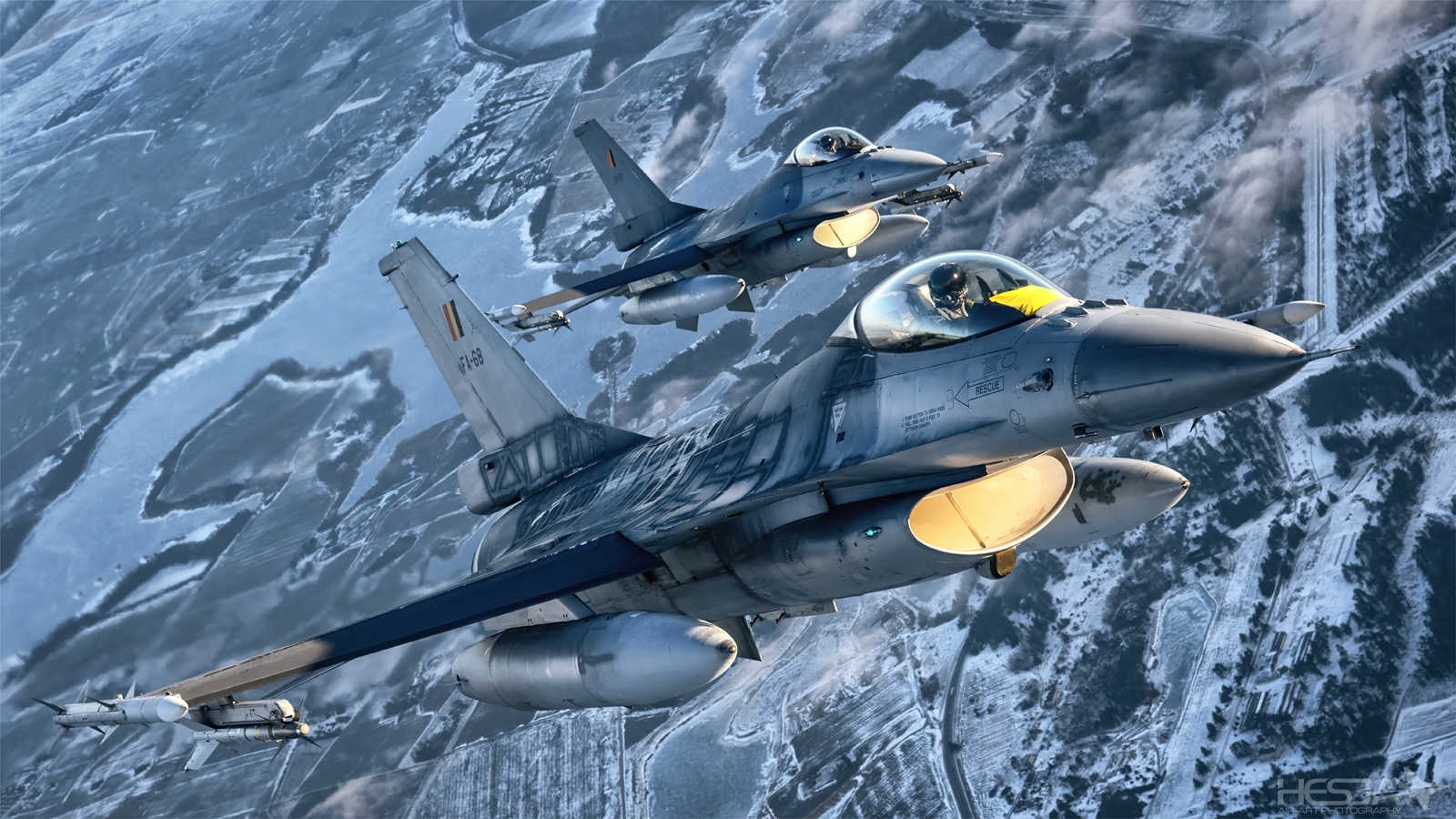
Then our Polish pair joined us to form a four-ship formation with the Belgians.
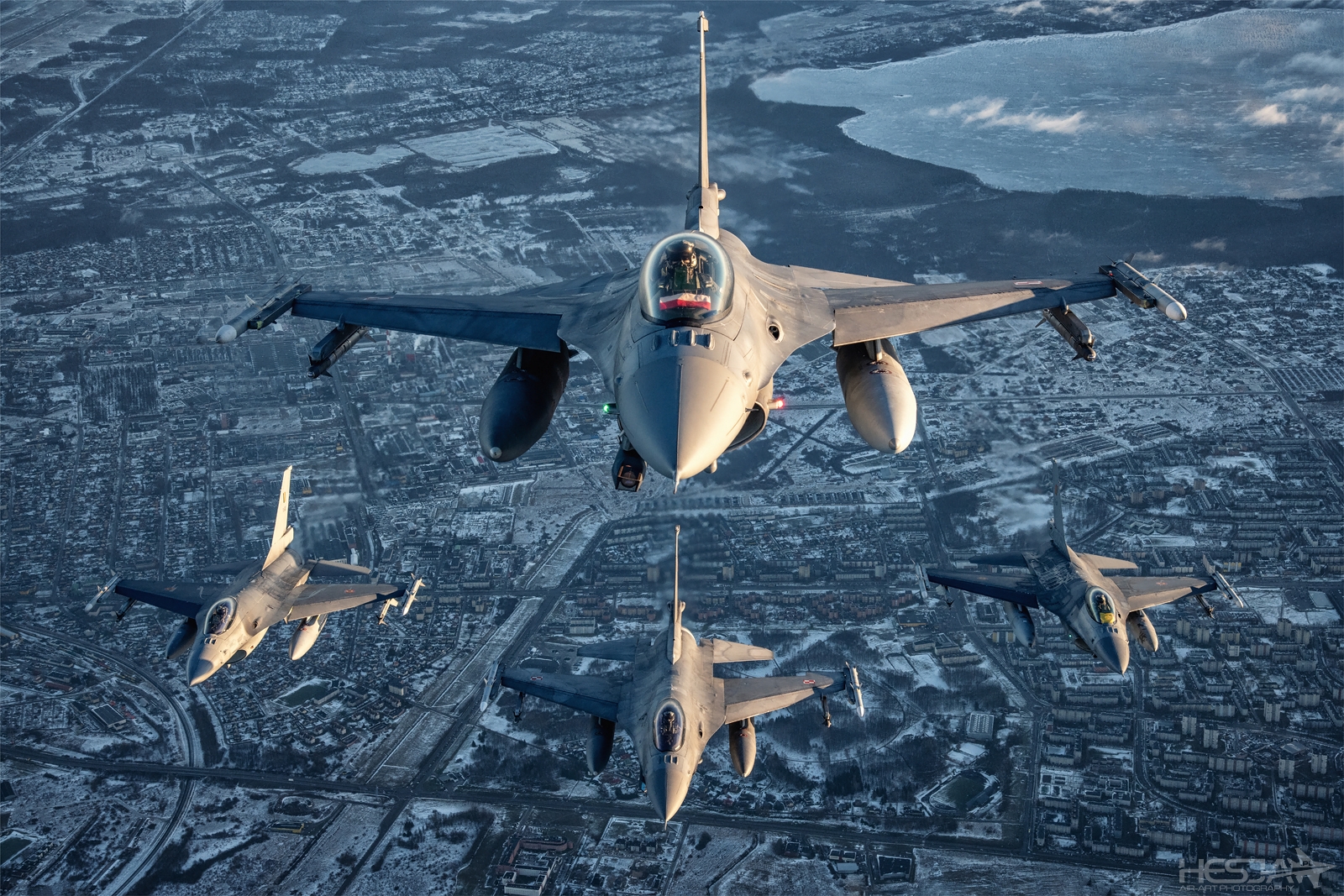
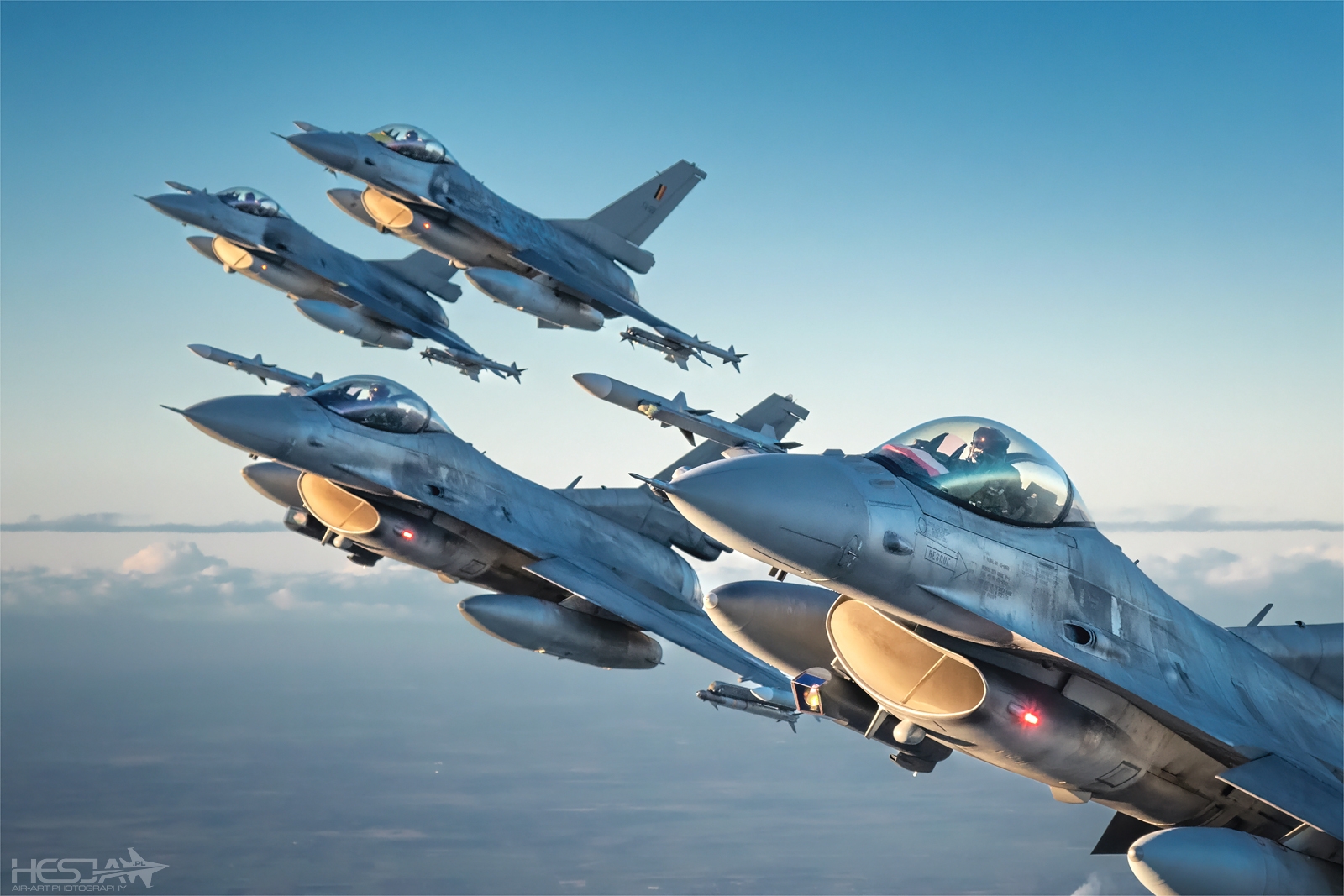
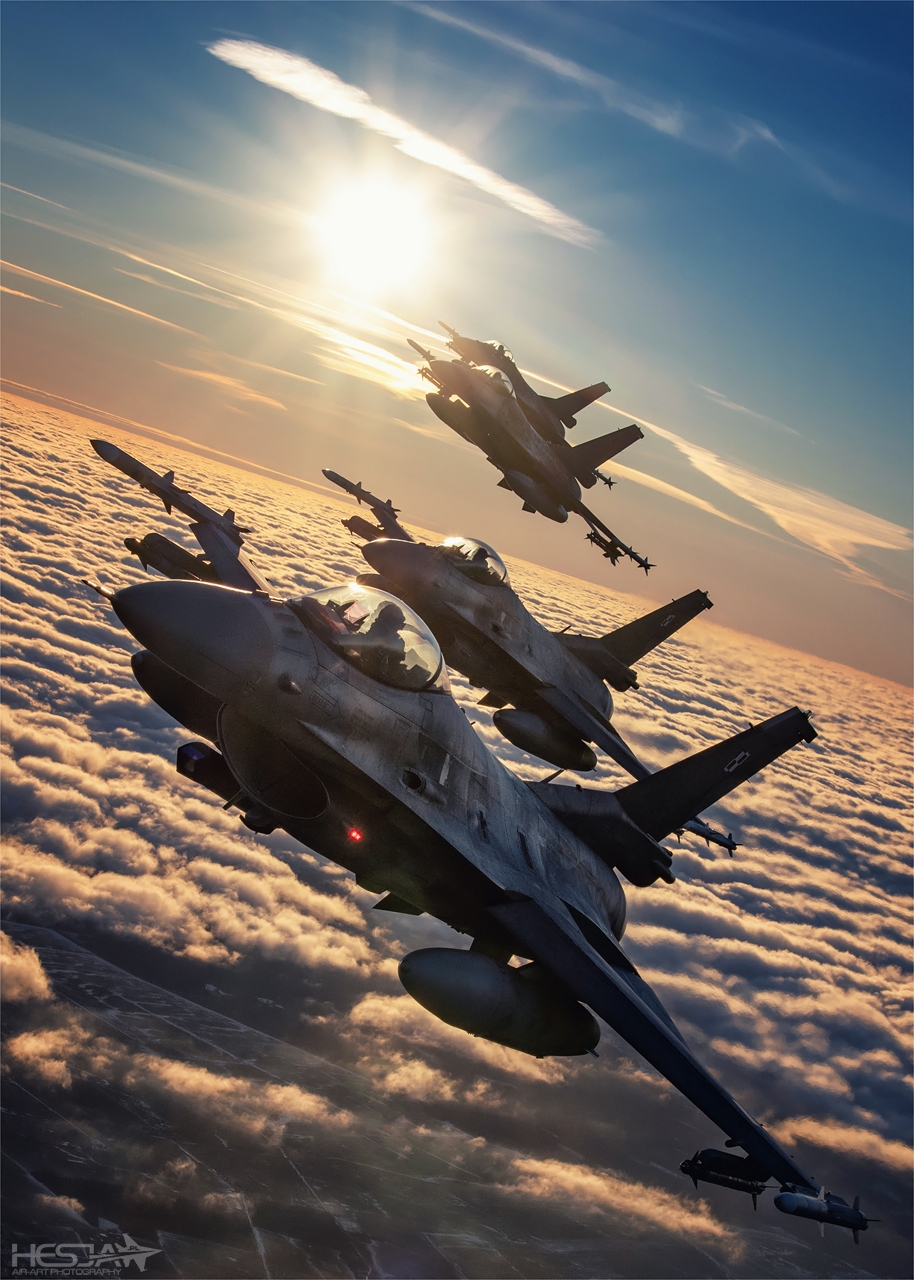
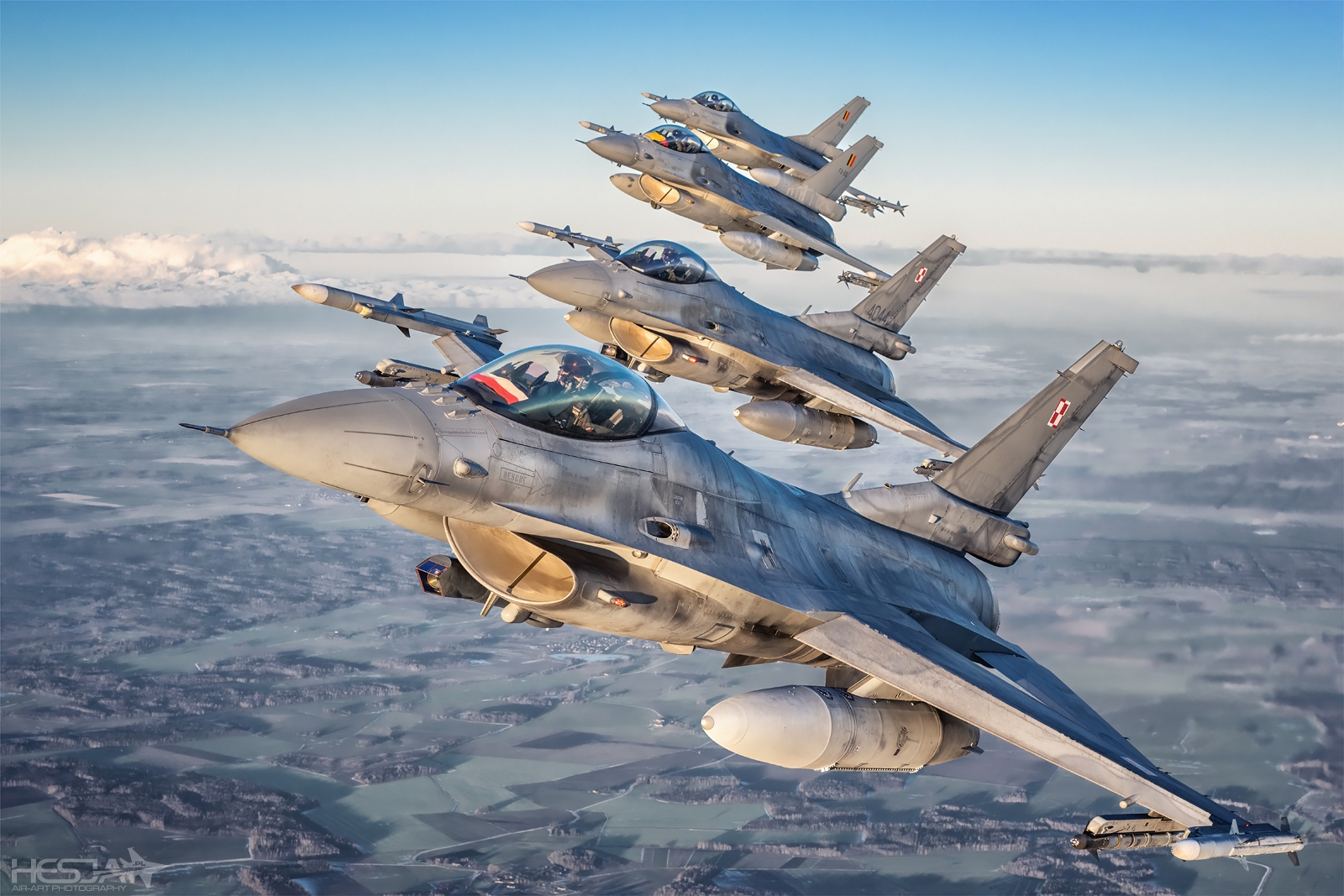
After the session with this large formation, a pair of leaders flew for a few moments with beautifully displayed national flags.
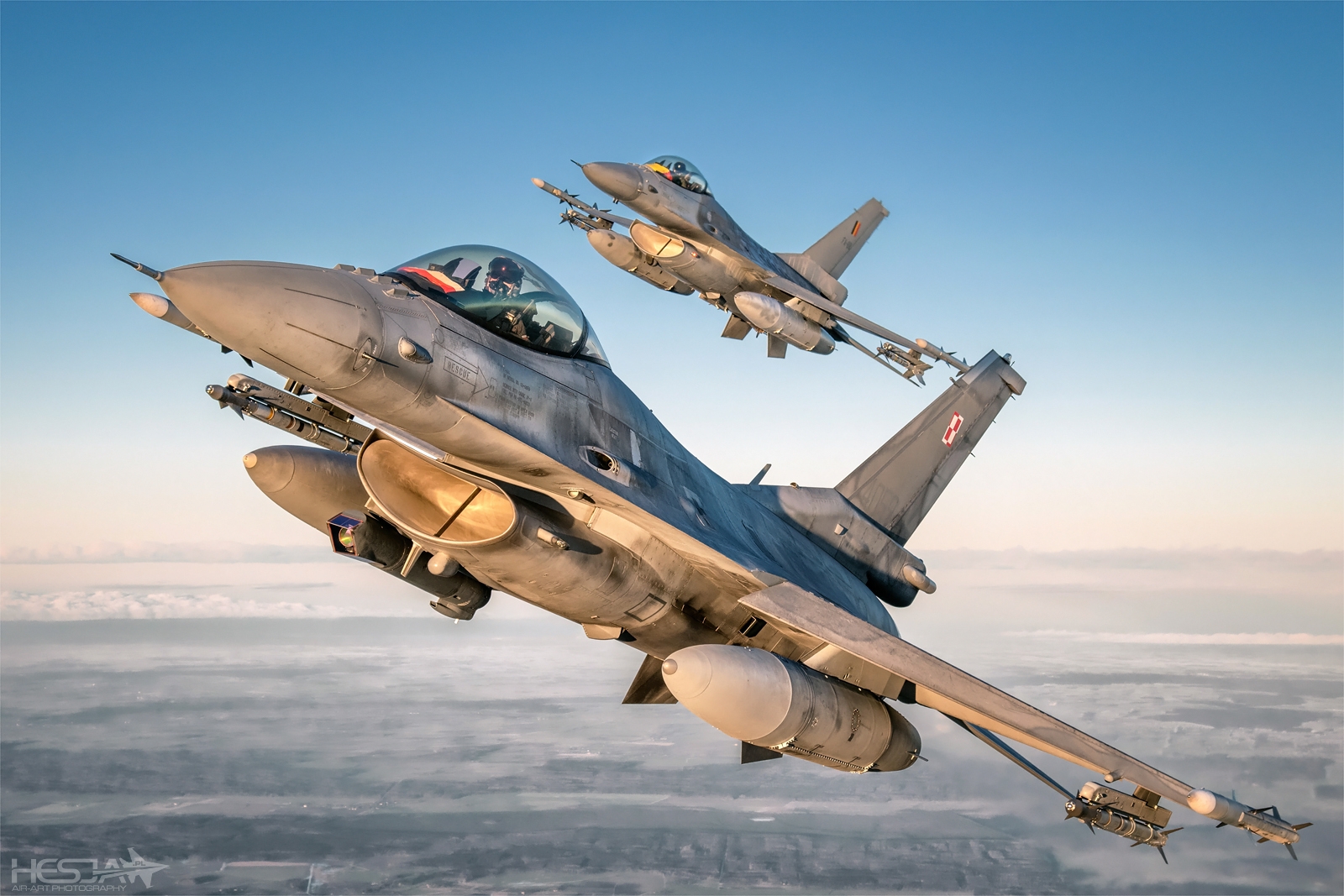
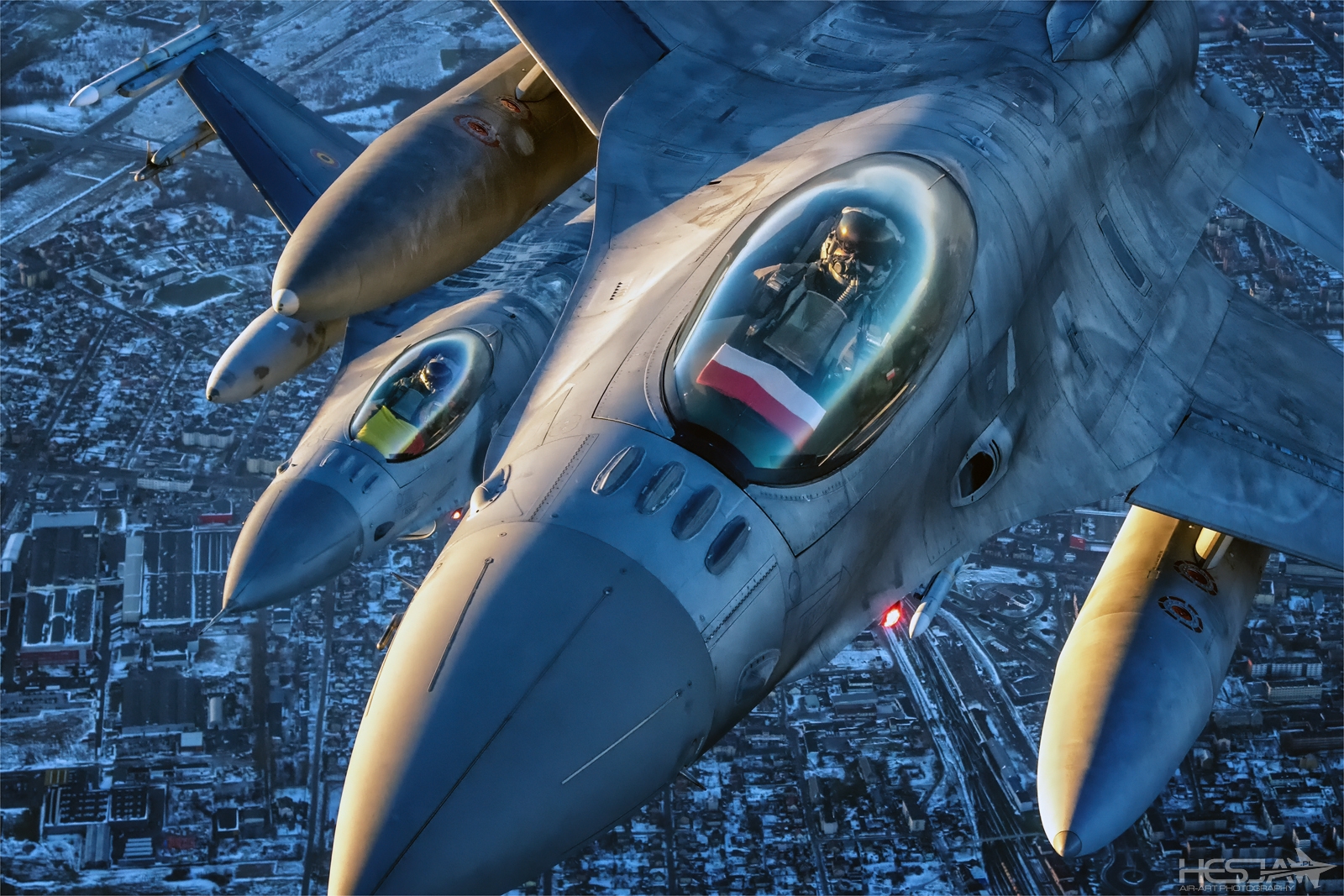
After saying goodbye to the Belgians, we stayed with the Polish pair, who performed all the previously arranged maneuvers over the wonderful quilt of clouds with the sun bending towards the west. The atmosphere of the session was almost exactly like that of 2019. Fortunately, the clouds did not cover the ground in 100%, so we also managed to take a few shots of snow-covered winter Lithuania.
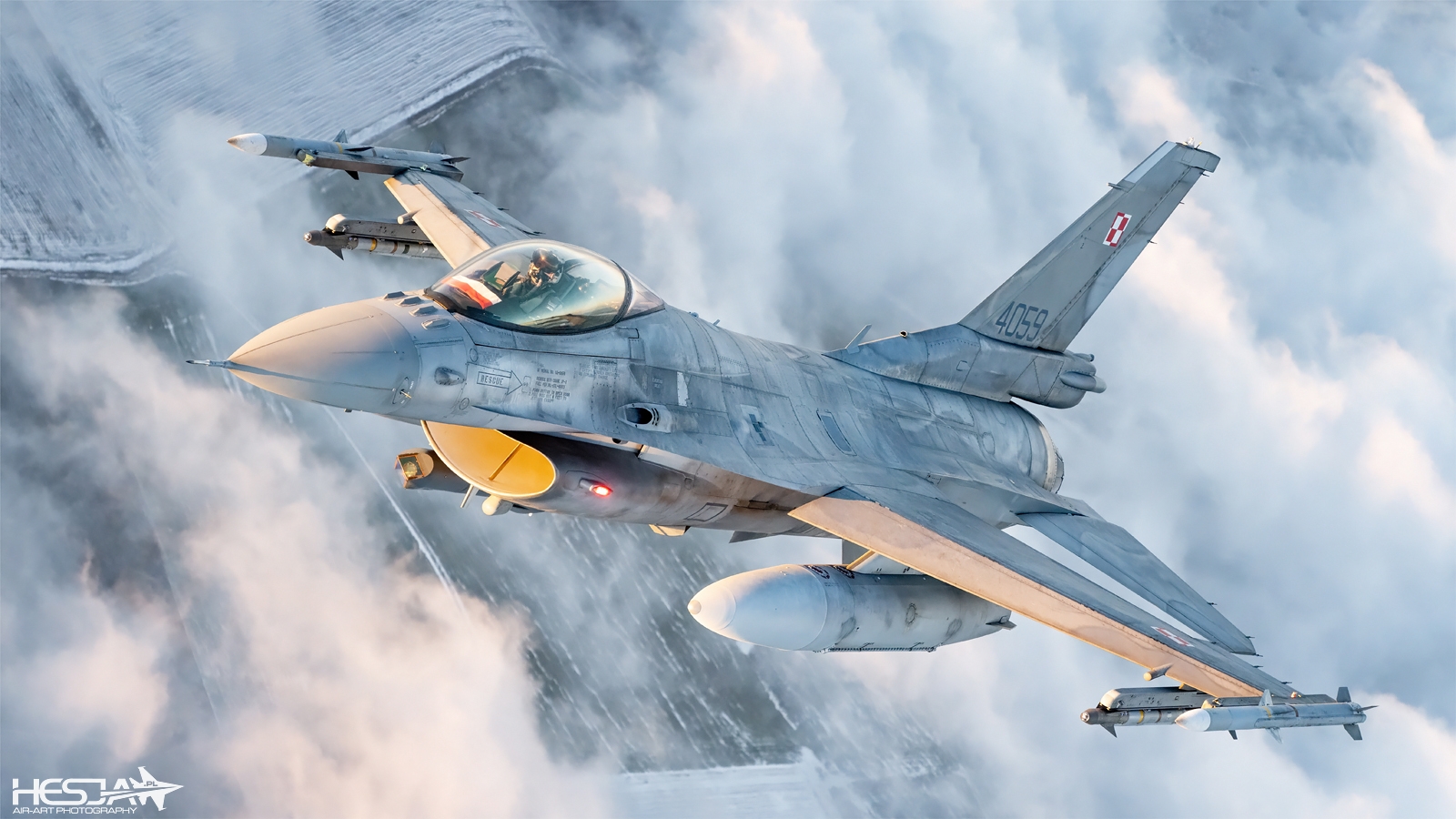
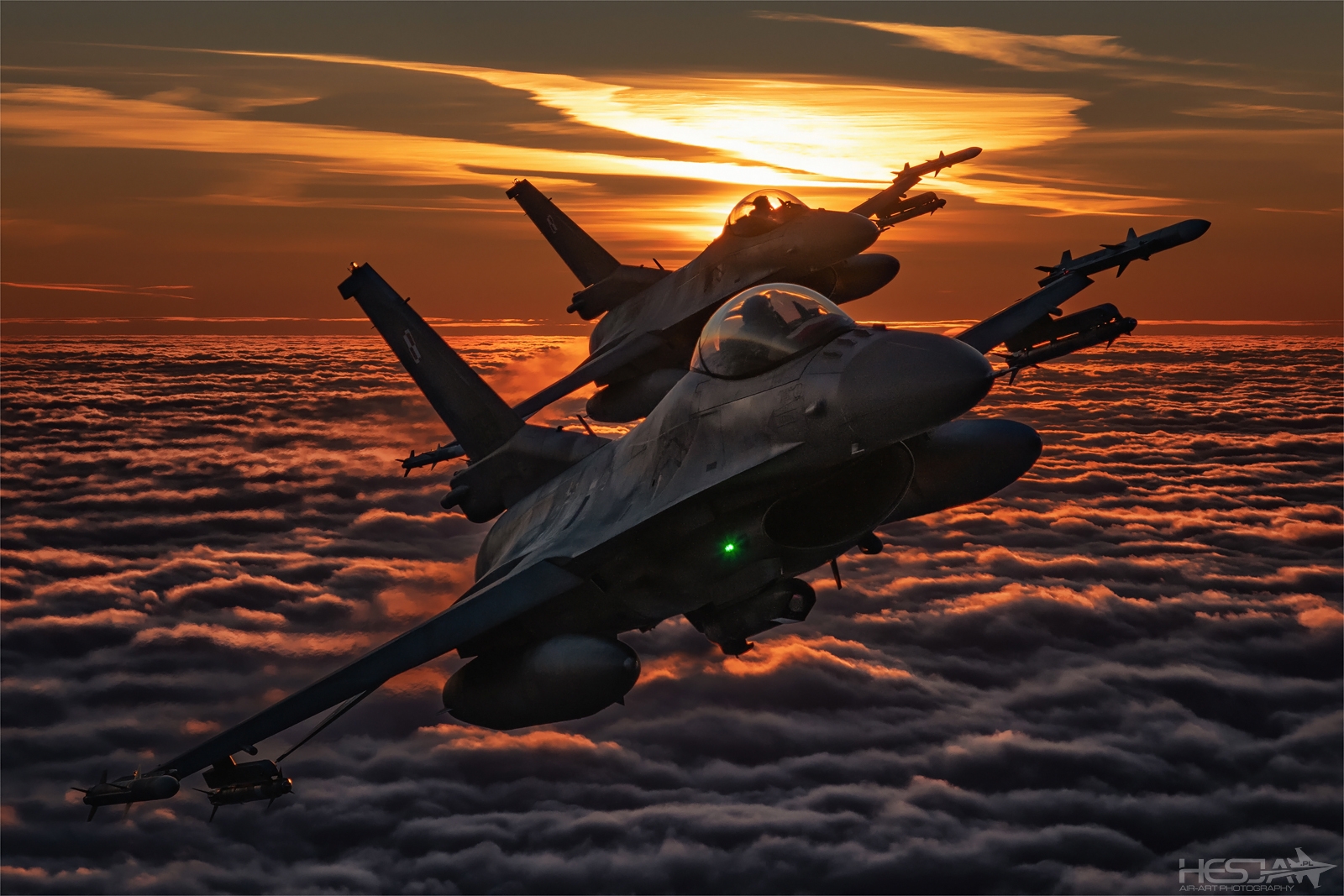
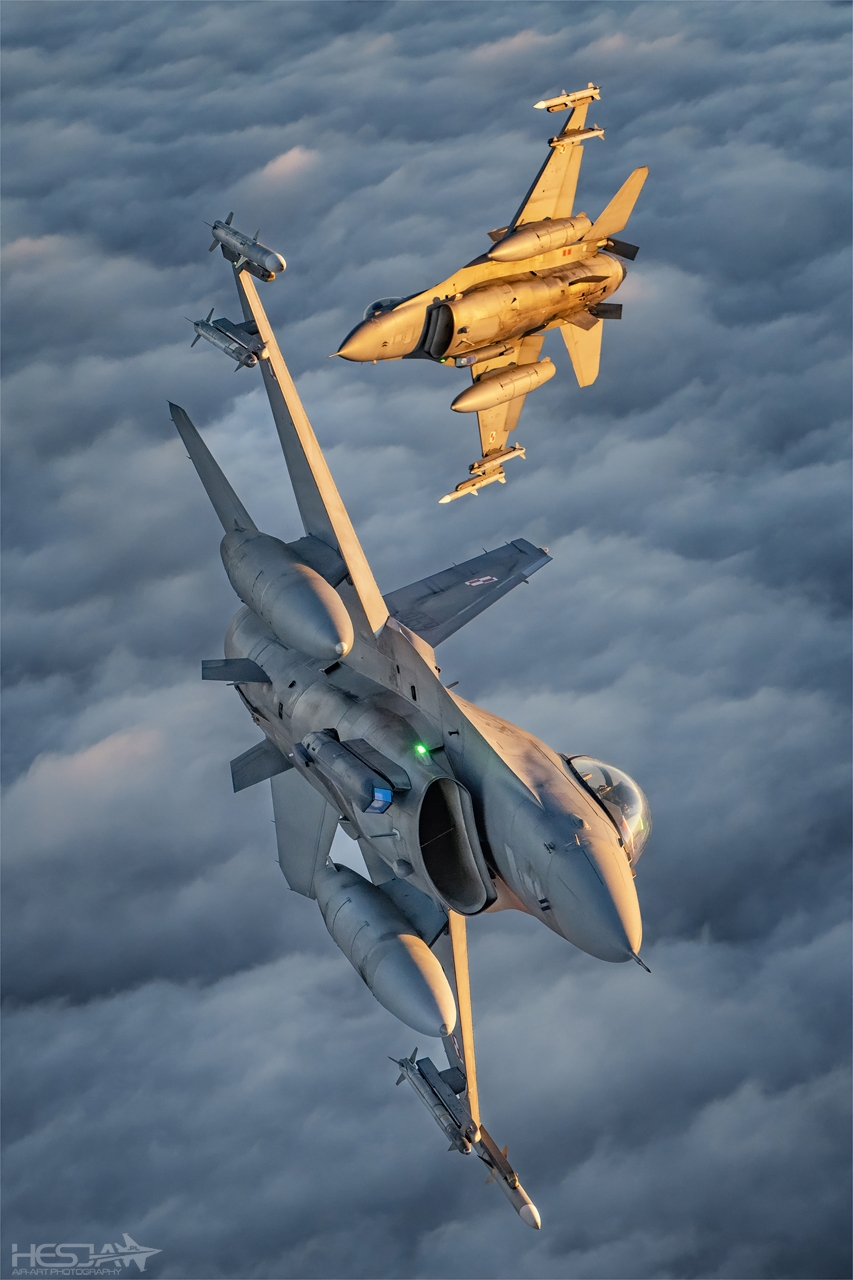
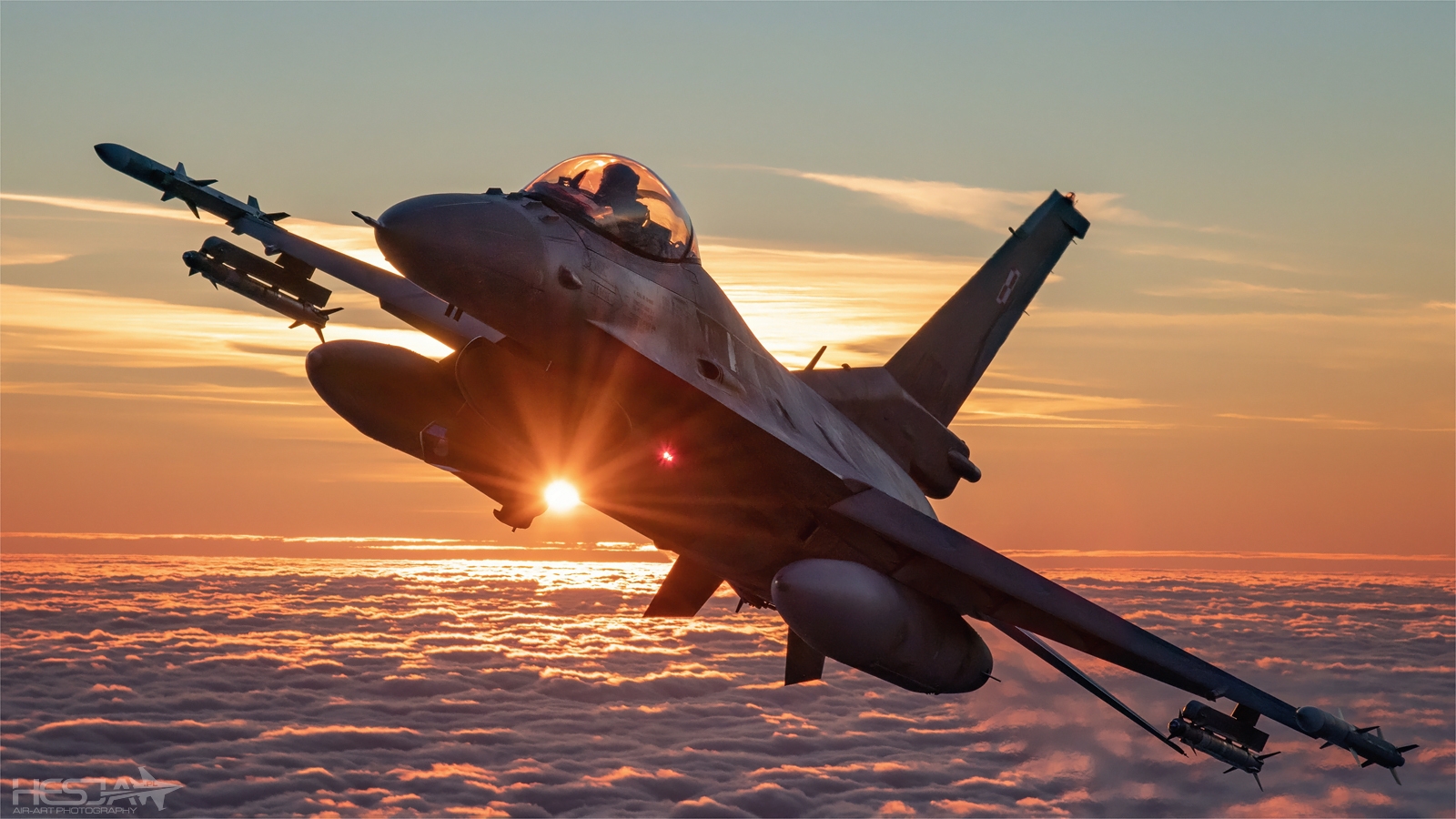
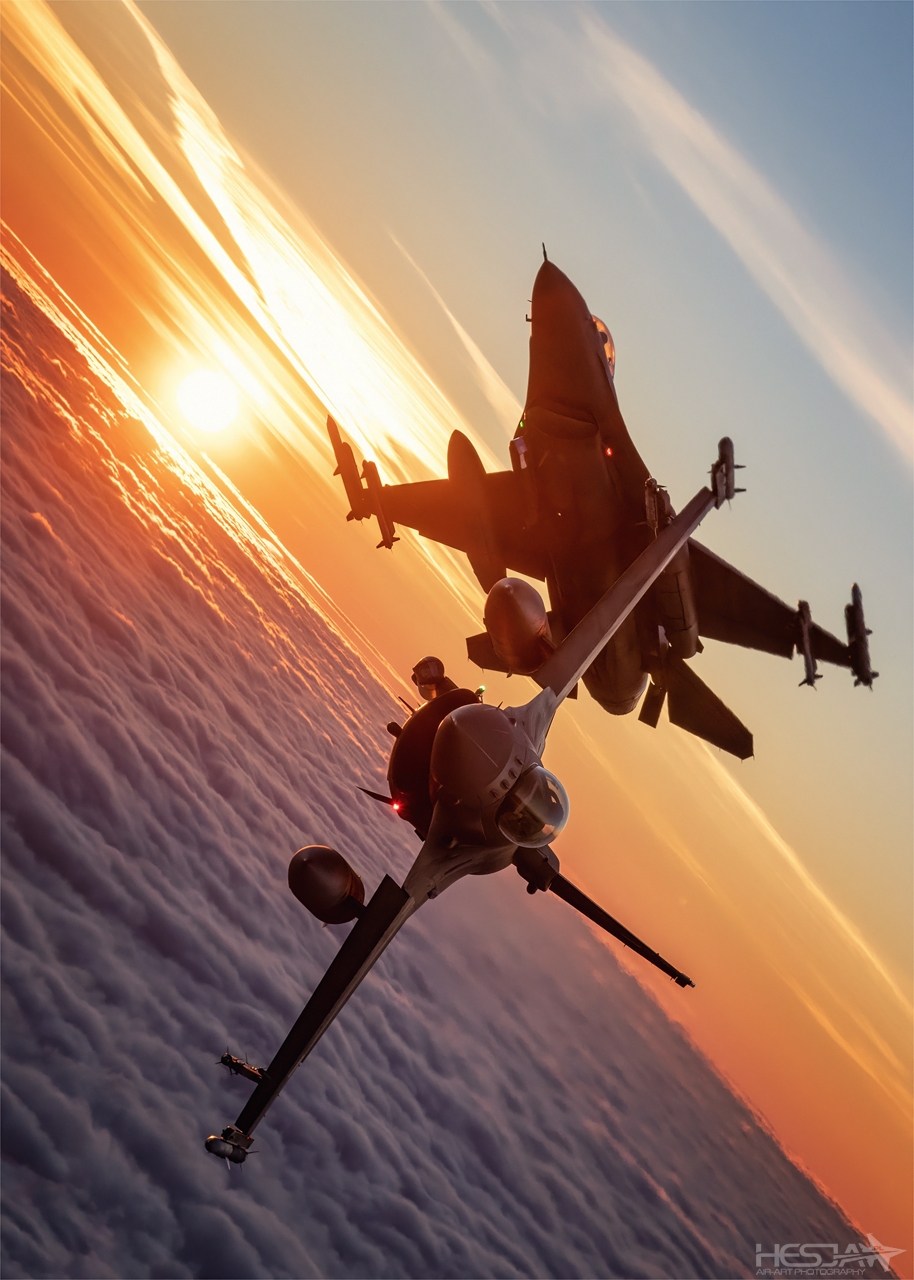
After sunset, we started the afterburner part. The difficulty of such a session is that you have to juggle the position of the aircraft and the moment of switching on the afterburning in such a way that you can clearly see the flames, but at the same time not too dark background. We have had several attempts to capture this unique moment. First, we acted in the turns, catching a different light on the horizon in the background, to finally fight with the aircraft flying below us. Unfortunately, it was already very dark, so we took pictures at a high ISO numbers. Not to mention fossilized hands and the whole body, because the temperature after sunset turned from very-low to hardcore-low.
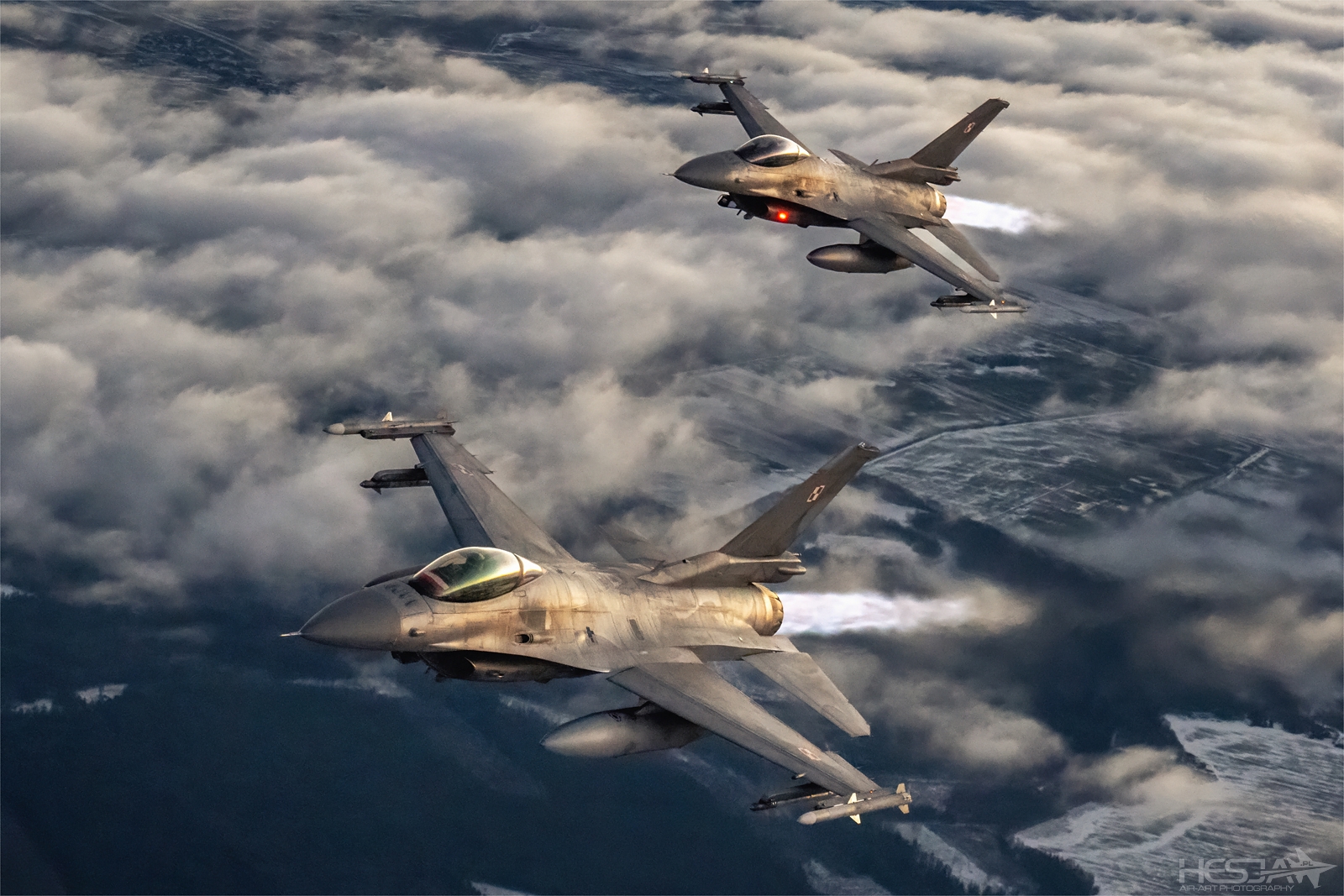
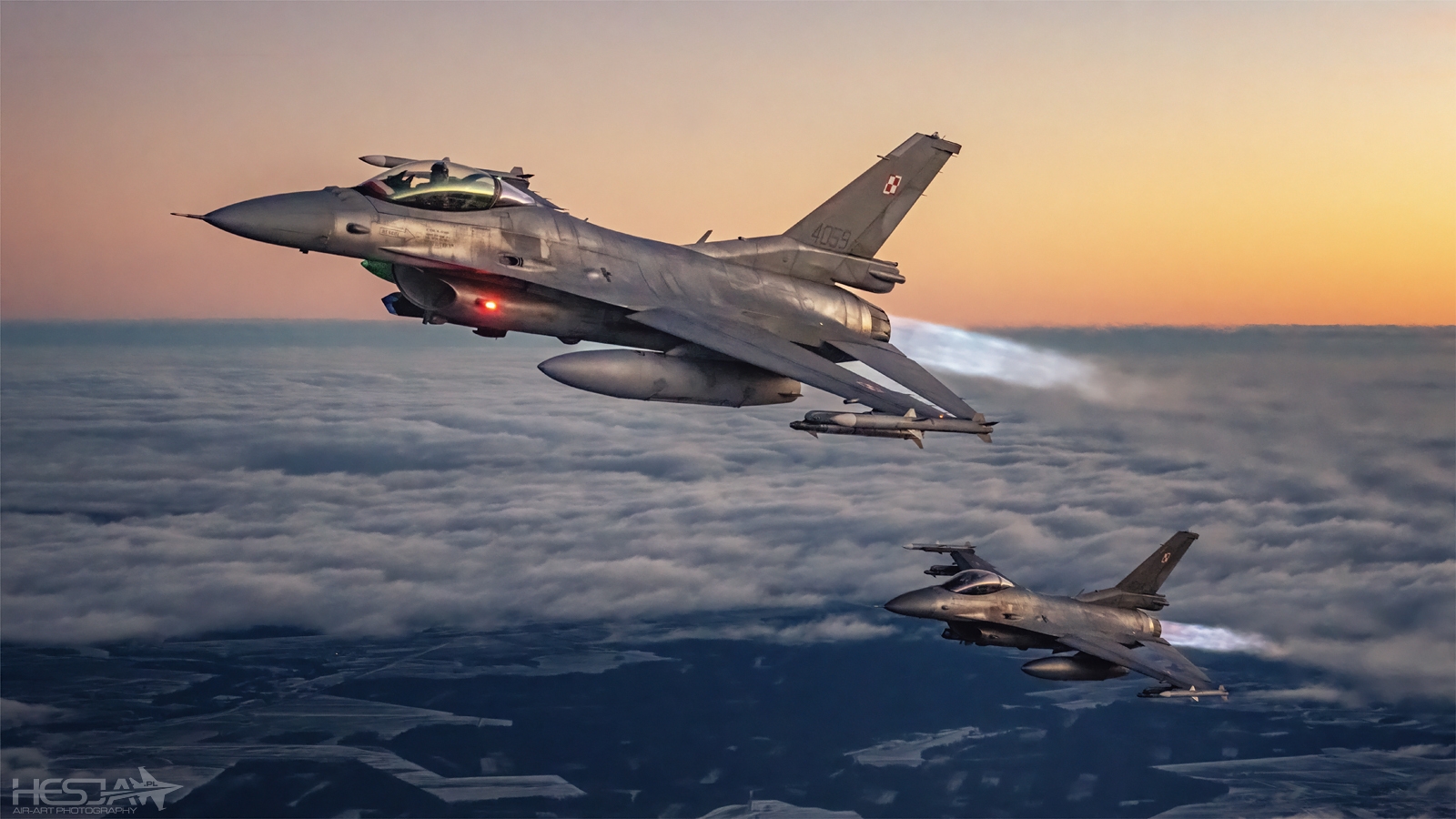
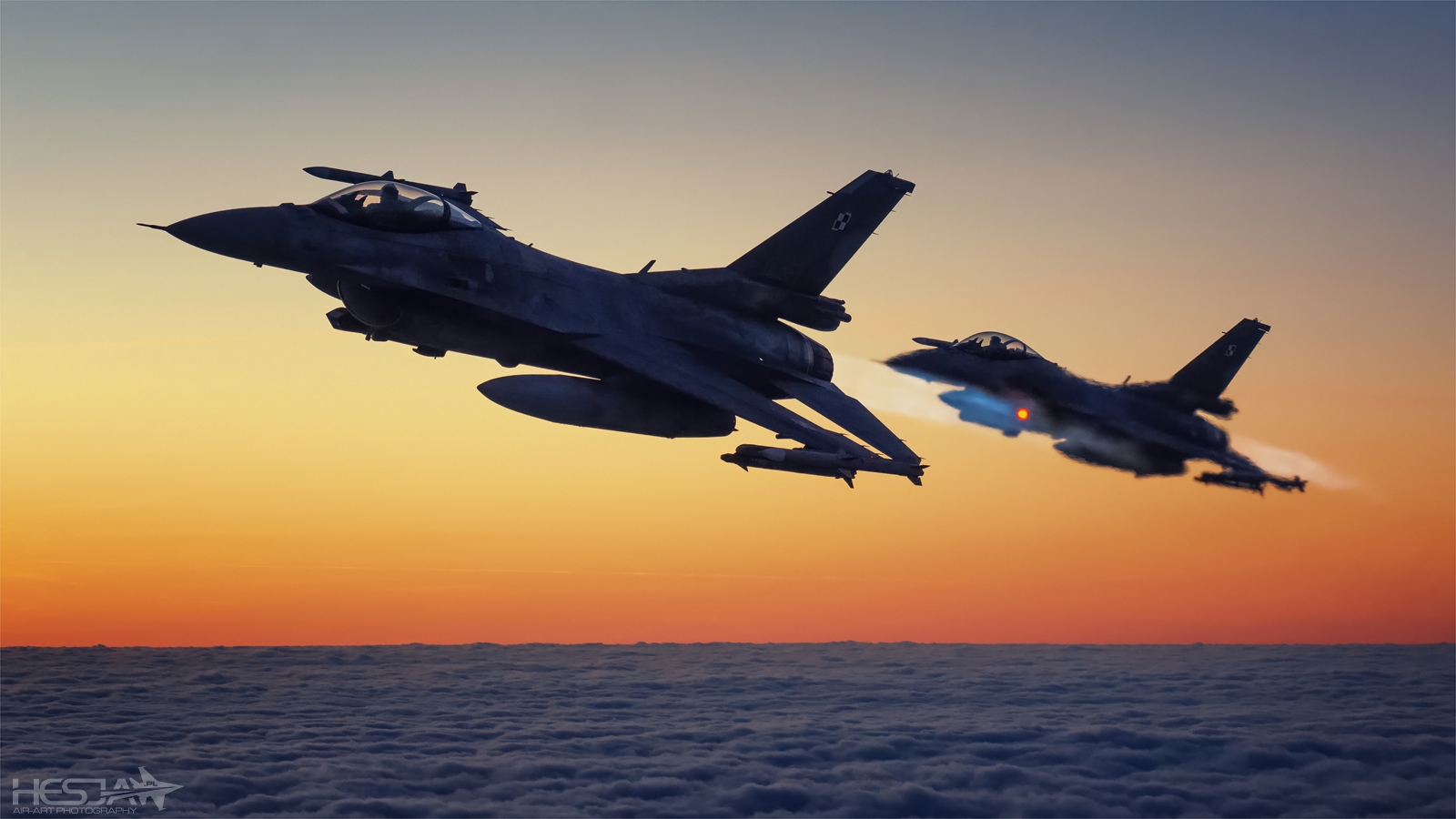
End of session. Our fossilized bodies were helped by our favorite Lithuanian powerful loadmaster. Yess! We got it!
Wednesday morning. According to the weather forecast, there was some chance to make a session, but only until noon. We arrived at the airport in a fairly thick fog that was supposed to rise with every moment. In the plan for the Wednesday session, we only had two Polish F-16s. It was going to be a short sunny weather window, so we decided to make up for the shots with winter and the airport in the background. On that day, the commander of our contingent was supposed to be the leader of the pair, so we briefed again. During the briefing, it turned out that Lithuanian technicians discovered malfunction in Spartan, but will try to improve it. We finished the discussion of our plans optimistically hoping that everything would be successful. Unfortunately, it turned out that the fault is more serious and we will not be able to conduct the session. It's hard. It is so after all. Safety first. We quickly got everything in our heads and prepared to photograph our pair's take-off from the ground. The clouds began to thin and the sun appeared over the airport, which beautifully illuminated the area covered with morning rime. It was going to be nice taking pictures, but unfortunately due to bad weather in the zone, the starting time began to move. Once, twice, and finally GO has been canceled. After a while, the weather at the airport and so completely died down, so ... we "disarmed" our equipment and we got into our cars and took the direction - Poland.
I came home feeling a job well done. It was a hell of a job, but this is a super cool job! I will say more, I happened to organize sessions where everything was planned, agreed, done in good weather and ...? And afterwards I was standing like John Travolta with the coat. :) It's already? So easy? Something was missing. The best thing to do is to overcome a number of problems, solve a lot of issues, it's best to do something that seems impossible at first glance. Then you feel great joy and pride in a job well done. This is how I felt driving home from Lithuania in January 2022.
>>> GALLERY WITH ALL PICTURES <<<

